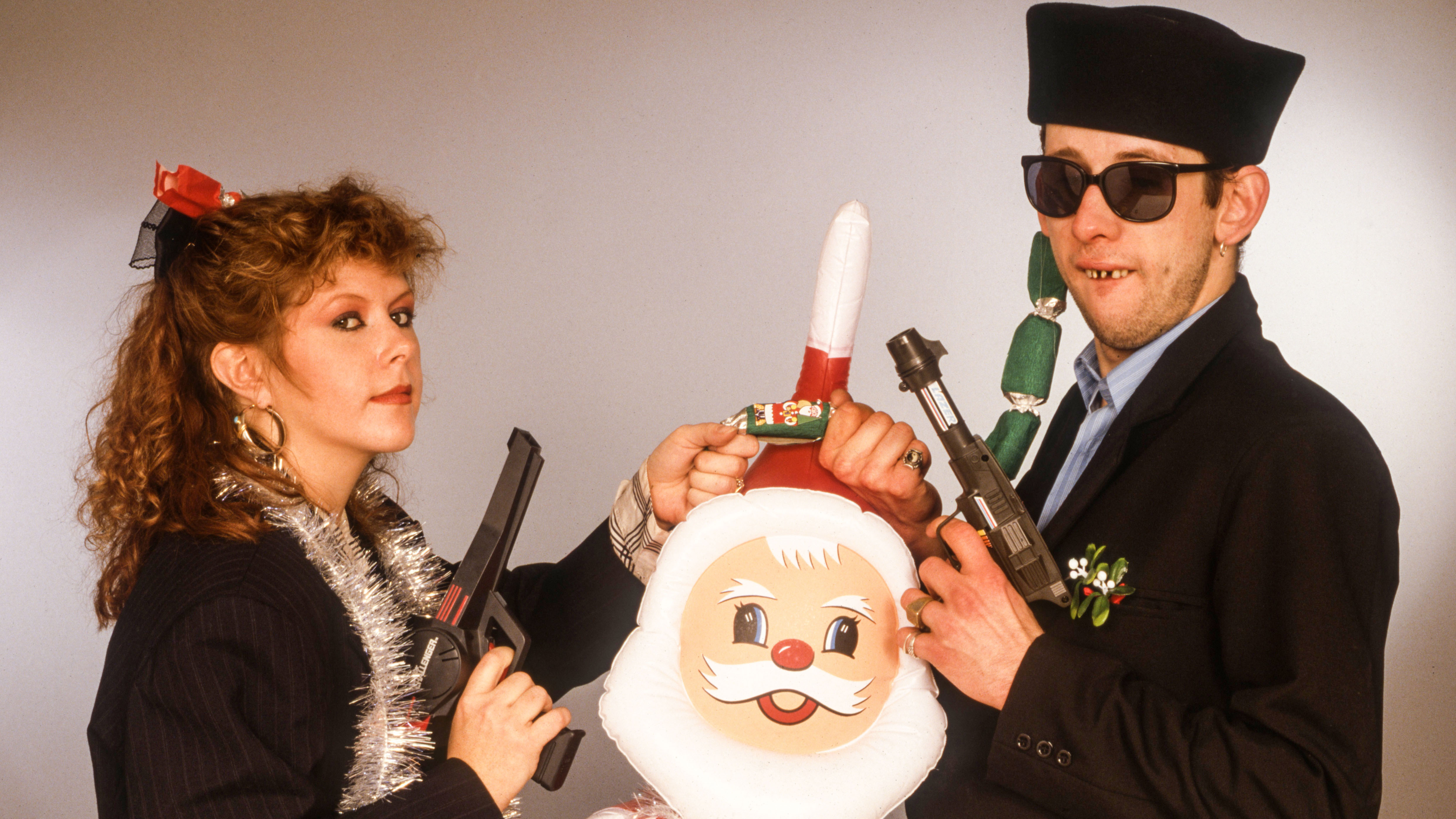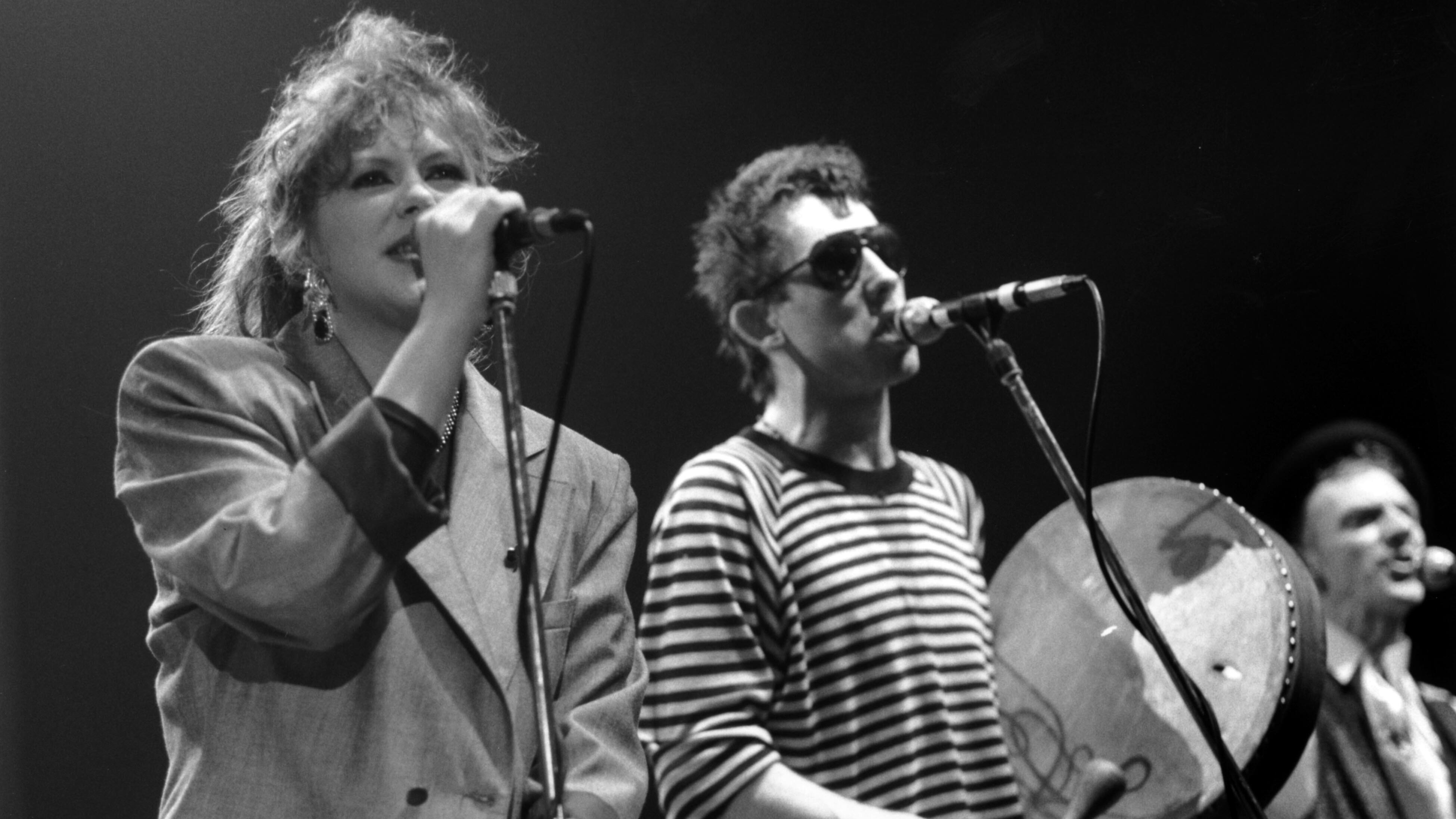
It’s one of the greatest Christmas songs of all time and the complete antithesis of everything that a festive single should traditionally be. Instead of reindeers and robins the central characters are a scathing, embittered couple whose growing sense of loathing is wholly at odds with the concept of festive goodwill. It’s an intoxicating song in which pathos and disenchantment are offset by sheer swagger and hope. Four decades on from its creation, the song remains as rousing and irresistible as the day it was released.
The origins of the song are murky. The Pogues singer Shane MacGowan always maintained that it was the result of a wager with the band’s then-producer, Elvis Costello, who allegedly bet the band they couldn’t write a Christmas single. But the band’s former manager Frank Murray said the song was his idea. “I just thought it would be really interesting to see what they do with a Christmas song,” recalled Murray in the BBC TV documentary The Story of Fairytale Of New York.
Whatever the reality, the song was conceived in 1985 by The Pogues banjo player Jem Finer and MacGowan. Finer came up with the melody and the original concept, about a sailor in New York looking out at the ocean and reminiscing about being back home in County Clare, Ireland. But Finer's wife Marcia thought this idea was “corny” and suggested new lyrics about a conversation between a couple who are down on their luck at Christmas. Finer took her suggestion and adapted the lyrics to the true story of some mutual friends living in New York.
"I had written two songs complete with tunes,” Finer told the NME in January 1988. “One had a good tune and crap lyrics, the other had the idea for ‘Fairytale' but the tune was poxy, I gave them both to Shane and he gave it a Broadway melody, and there it was".
By 1985, The Pogues had forged a reputation as a ferocious live act, forging an Irish folk-punk sound and belting out covers of Irish rebel songs alongside their own compositions. This live reputation fuelled sales of their first two albums, Red Roses For Me and Rum, Sodomy & The Lash. In March 1986, the band toured the US for the first time. They opened in New York, a city that had long fascinated MacGowan and it had a big influence on his lyrics for the song, as did Sergio Leone’s film Once Upon A Time In America.
Out front in the audience at their New York gig, were two people who would be a major asset to the song: actor Matt Dillon who made a cameo appearance as a cop in the song’s video and filmmaker and fan Peter Dougherty, who would direct the video. “It was the kind of thing that I liked,” recalled Matt Dillon. “It reminded me of The Dubliners and The Clancy Brothers mixed with The Clash. Immediately I was a big fan.”
MacGowan took the title of their new Christmas song straight from J.P. Donleavy’s 1973 novel A Fairy Tale Of New York, which was lying around in the recording studio. By early 1986, the song's title and the lyrical theme of a conversation between a couple were all in place. So too was its musical structure. Like all great pop songs, Fairytale Of New York has very few chords, in this case just D, A, G, Bmin and an Asus4.
The next step was for MacGowan to pull all the elements together and actually write it. He finally nailed the lyrics in Scandinavia, while recuperating from a bout of pneumonia. “You get delirium and stuff,” he recalled of his illness, in the BBC documentary. “So I got quite a few good images out of that”.
To help him evoke the festive feeling he brought in some additional help.
"I sat down, opened the sherry, got the peanuts out and pretended it was Christmas,” he told Melody Maker. “It's more like A Pair Of Brown Eyes than Sally MacLennane, but there's also a céilidh bit in the middle which you can definitely dance to. Like a country and Irish ballad, but one you can do a brisk waltz to, especially when you've got about three of these [drinks] inside you."

In January 1986, The Pogues entered the recording studio with Elvis Costello in the producer’s chair. The song was originally intended as a duet between MacGowan and The Pogues’ bassist Cait O’Riordan and they laid down a version of the song with O’Riordan duetting with MacGowan.
But the band’s guitarist Philip Chevron recalled that the version recorded with O’Riordan lacked real fire. “It was not quite there. It needed to have a full-on confident performance from the band, which it lacked.”
During the sessions, Costello allegedly suggested renaming the song 'Christmas Eve in the Drunk Tank', after the song's opening lines. The band disliked this idea, and MacGowan suggested to Costello that with such a title, the song would not be well received.
But all chances of improving the song were stopped dead when the band’s label Stiff Records went into administration, resulting in financial difficulties and a halt to the recording. To compound problems, there were allegedly tensions between the band and Costello, prompting a split. Then, in October 1986, O’Riordan, who was romantically involved with Costello, quit the band.
The problems at Stiff were eventually resolved and the search began for another vocalist to sing the female part. Meanwhile, they entered Abbey Road Studios in March 1987 to start recording their next album If I Should Fall From Grace With God, with new producer Steve Lillywhite, whose reputation was soaring following his work with U2 and Simple Minds. As a temporary measure, MacGowan sang both the male and female parts on Fairytale of New York. But despite numerous attempts they weren’t happy with the recordings.
“The band just couldn’t play it very well,” recalled Finer. It was a view echoed by Frank Murray. “The song wasn’t really whole. It was like a great song but we hadn’t given much thought to it you know. We started putting it in the set, so it became a different song – very tight.”
By the summer of 1987 the band still had no-one to sing the female part of Fairytale of New York. “And I think time just ran out,” recalled Finer. “If you’re going to have a Christmas song it has to be out for Christmas.”
By August 1987 the sessions had moved to nearby RAK Studios. One evening MacGowan suggested that Lillywhite take the track back to his home studio and ask his wife Kirsty McColl record a new guide vocal for the song. MacColl was a gifted singer/songwriter and had already scored solo hits with her song There’s A Guy Works Down The Chip Shop Swears He’s Elvis and a cover of Billy Bragg’s New England. MacColl, who died tragically in 2000 when she was hit by a speedboat while diving off the coast of Mexico, was a strong character with a fierce wit.
“She was no nonsense, but at the same time she believed in magic,” said Johnny Marr in a tribute. “A true artist, in a class of one, and irreplaceable.”
There was a real richness to MacColl’s voice, with its strong folk and country tinges. The following day, when Lillywhite played MacColl’s ‘guide’ vocal to the band, they knew in an instant they had found the female voice for the song.
“As soon as we heard Kirsty singing, we knew she was the answer,” said Spider Stacy, tin whistle player with The Pogues. MacGowan was equally bowled over. "Kirsty knew exactly the right measure of viciousness and femininity and romance to put into it and she had a very strong character and it came across in a big way,” he recalled. “In operas, if you have a double aria, it's what the woman does that really matters. The man lies, the woman tells the truth."
Things moved swiftly. MacGowan re-recorded his vocals alongside the tape of MacColl's contribution and the track was completed, apart from the addition of a harp, played by Siobhan Sheahan, and horns and a string section, which were added at Townhouse Studios.
Fairytale of New York was released on 23 November 1987 and propelled up the charts by a memorable performance on Top Of The Pops on 17 December 1987. It shot to No, 2 in the UK Singles charts, kept off the top slot by The Pet Shop Boys cover of Always On My Mind. It was re-released in 1991 and 2005, and the song regularly tops the polls of best Christmas songs of all time. According to The Telegraph, Fairytale of New York is the UK’s most played Christmas song of the 21st century.
“It was a happy time for the group,” MacGowan reflected in a 2020 interview. “It’s our Bohemian Rhapsody.” On hearing the song after MacColl's death in 2000, MacGowan said: "For a while it used to depress me. But now I just think it's a tribute to Kirsty."
For MacColl, who suffered from stage fright, the song sparked a return to live performance, guesting with The Pogues in Europe. “The reception she’d get every night was unbelievable,” Stacy said. “She got a real lift from that. It helped get her past her nerves onstage.”
In the last two decades, the song has been criticised for some of its lyrical content, prompting BBC Radio 1 to edit some words to “avoid offence”, although the traditionally more conservative BBC Radio 2 has continued to play the original version.
Nick Cave has accused the BBC of "mutilating" the song, stating that such censorship would result in the song being "stripped of its value". And when two broadcaster’s on Ireland’s RTE 2fm pop channel called for the song to be banned in 2018 to be bleeped, MacGowan himself waded into the debate.
“The word was used by the character because it fitted with the way she would speak and with her character,” he told Virgin Television’s The Tonight Show. She is not supposed to be a nice person, or even a wholesome person. She is a woman of a certain generation at a certain time in history and she is down on her luck and desperate. Her dialogue is as accurate as I could make it but she is not intended to offend.”
Almost four decades on from its release, Fairytale of New York still sounds fresh and emotionally compelling. Like all great art, it is uncompromising and unique. As Dorian Lynsky put it in The Guardian on the 25th anniversary of the song in December 2012: “Fairytale Of New York is an anti-Christmas song that ended up being, for a generation, the Christmas song.”







